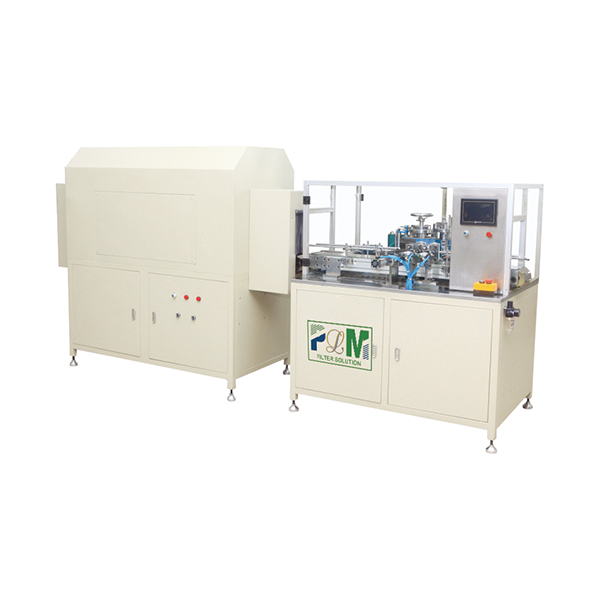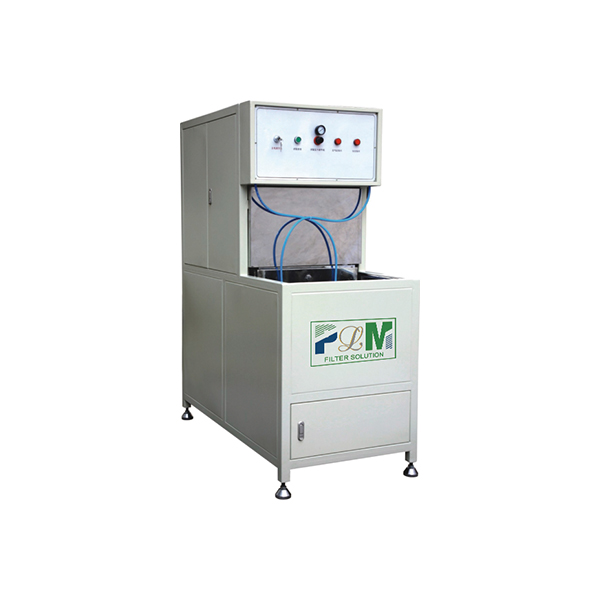Nov . 23, 2025 19:00 Back to list
Filter Paper: Essential Guide for Industry and Global Applications
Understanding Filter Paper: Why It Matters Across Industries
If you’ve ever brewed a cup of coffee or filtered some muddy water, you’ve had a brush with filter paper — that quiet unsung hero of cleansing and clarification. But beyond the kitchen counter, filter paper serves vital global roles in healthcare, environmental protection, and industrial manufacturing. It ensures purity, safety, and efficiency worldwide, from labs testing infectious diseases to factories filtering contaminants from air and water. Gaining a solid grasp on filter paper isn’t just for lab techs; it’s about appreciating a simple material that drives complex solutions, supporting sustainability goals and improving lives—often where you least expect it.
Mini takeaway: Filter paper’s humble form belies its immense impact on global health, industry, and environment.
The World in Need of Filter Paper: Global Context
Worldwide, the relevance of filter paper stretches far beyond borders and industries. According to the International Organization for Standardization (ISO), quality and consistency in filtration are crucial for ensuring safe drinking water, pharmaceutical quality, and industrial efficiency. The World Bank estimates that over two billion people globally still lack access to safe drinking water, and filtration media like filter paper play an underrated role in improving this statistic.
On an industrial scale, millions of tons of pollutants pass through filters every day to reduce environmental footprint—this includes everything from factory exhaust to waste water treatment plants. Yet, the challenge remains: how do we balance affordability, efficiency, and sustainability in filtration products to meet growing demand especially in developing regions? Filter paper steps in as a simple yet effective solution, adaptable across settings and scales.
Mini takeaway: Filter paper addresses vital challenges like water purification and pollution control that directly affect billions worldwide.
What Exactly Is Filter Paper?
Simply put, filter paper is a porous sheet usually made from cellulose fibers. These fibers are carefully processed to create a material that lets fluids pass while trapping particulates, impurities, or microorganisms. Think of it as a selective sieve — but one engineered with precision for labs, factories, or environmental services.
Its significance? Filter paper bridges everyday needs and sophisticated technology. In modern industry, it supports quality control; in humanitarian aid, it ensures clean water and safe samples; in research, it's a fundamental lab staple. Without this straightforward tool, many processes would become inefficient, inaccurate, or even hazardous.
Mini takeaway: Filter paper is a cellulose-based filtration medium critical to scientific accuracy, safety, and process optimization.
Core Components That Define Filter Paper Performance
1. Porosity & Filtration Efficiency
The size and distribution of pores largely dictate what kinds of particles the filter paper can capture. Lower porosity means finer filtration but may slow flow rates. This balance is crucial depending on whether you’re filtering large sediment or microscopic bacteria.
2. Durability & Wet Strength
Filter paper must withstand practical handling and exposure to liquids without tearing or degrading. High wet strength is vital in industrial environments to prevent breakage during filtration.
3. Chemical Compatibility
Not all liquids are friendly to cellulose fibers. So, filter paper must resist solvents, acids, or bases it encounters in labs or industrial processes.
4. Thickness & Weight
These physical properties influence flow rate and capacity. Thicker papers can trap more particulates but may decrease speed, a detail that engineers carefully consider.
5. Cost Efficiency
Filtration is a routine process, so cost per unit and lifespan impact adoption, especially in resource-limited settings.
6. Scalability & Customization
Some industries need specialty sizes, grades, or treatments—e.g., ashless filter paper for analytical labs—showing versatility as a key factor.
Mini takeaway: Porosity, strength, chemical resistance, cost, and adaptability define filter paper’s success in its many roles.
Global Applications: Where Filter Paper Makes a Clean Difference
- Water Treatment Facilities: In both urban and remote areas of Asia and Africa, filter paper helps remove sediments and bacteria, enabling safer drinking water.
- Pharmaceutical Industry: Sterile filtration of liquids to guard against contamination during drug manufacturing (Europe and North America lead here).
- Environmental Monitoring: Air quality standards rely on filter paper to trap particulate matter for analysis, benefiting global climate initiatives.
- Disaster Relief Operations: Quick-deploy water purification kits incorporating filter paper bring lifeline support to flood or drought-affected communities.
- Food & Beverage Sector: In coffee, wine, beer production, quality control depends on consistent filtration.
Mini takeaway: From emergency aid to global brands, filter paper supports critical safety and quality controls worldwide.
Filter Paper Advantages: More Than Just a Filtration Medium
Cost-wise, filter paper provides a relatively inexpensive yet efficient method for high-volume applications. Sustainability-wise, many types are biodegradable, aligning with growing eco-conscious compliance.
Emotionally, it’s about trust: consumers, patients, and communities rely on it to safeguard their health and dignity. Pragmatically, innovations in manufacturing are improving lifespan and performance, increasing reliability in the toughest conditions.
Mini takeaway: Filter paper’s affordability, eco-friendliness, and dependability offer both logic and peace of mind.
Looking Ahead: Trends Shaping the Future of Filter Paper
The green revolution is inspiring bio-based and compostable filter media alternatives. Meanwhile, nano-fiber coatings are enhancing filtration precision without sacrificing flow rates. Automation in lab settings is integrating customized filter papers for robotics-driven sample processing, increasing throughput and reducing errors.
Policy shifts, such as stricter environmental standards from bodies like the UN Environment Programme, create pressures and incentives to develop ever more efficient and sustainable filtration products.
Mini takeaway: Innovation in materials science and digital integration ensure filter paper remains vital and future-proof.
Facing Hurdles: Challenges & Proposals for Filter Paper Use
Fragility in wet conditions remains a downside for some filter paper types. Also, single-use products create waste concerns, especially in large-scale industries. Solutions include reinforced fiber blends, recycling programs, and hybrid filter systems combining paper with synthetic membranes.
Moreover, in low-resource areas, inconsistent supply chains and quality control affect access. Strengthening local manufacturing and global partnerships can bridge these gaps.
Mini takeaway: Addressing durability, waste, and accessibility are key for making filter paper universally effective.
FAQ: Practical Questions About Filter Paper
- What factors determine which filter paper to choose for laboratory use?
- Filtration pore size, chemical compatibility, and wet strength are critical. Labs also consider ash content and thickness, depending on the nature of the sample and analysis requirements.
- Can filter paper be reused or cleaned?
- Generally, filter paper is designed for single use due to contamination risks and structural degradation, but some specialty papers allow gentle rinsing in non-critical tasks.
- How does filter paper compare to synthetic membrane filters?
- Filter paper offers cost-effectiveness and biodegradability, while membranes provide finer filtration and chemical resistance. Choice depends on purpose and budget.
- Is filter paper environmentally friendly?
- Most filter paper is biodegradable and sourced from renewable cellulose fibers, but disposal methods influence overall environmental impact.
- Where can I find customized filter papers for industrial needs?
- Many vendors offer tailor-made grades, sizes, and treatments—check specialist manufacturers and suppliers who can meet technical specifications.
Product Specification Table: Typical Filter Paper Attributes
| Property | Standard Range | Notes |
|---|---|---|
| Porosity (Microns) | 2 – 25 µm | Varies by grade |
| Thickness | 0.2 – 0.5 mm | Influences flow rate |
| Wet Strength | Medium to High | Required for industrial use |
| Ash Content | Critical for analytical purity | |
| Chemical Resistance | Moderate to High | Dependent on fiber treatment |
Vendor Comparison: Leading Filter Paper Suppliers
| Vendor | Product Range | Customization | Sustainability Credentials | Lead Time |
|---|---|---|---|---|
| Acme Filters | Standard + Specialty | High | Recycled content options | 2-4 weeks |
| PurePapers | Lab-grade focus | Medium | ISO certified eco standards | 1-3 weeks |
| GreenFiber | Eco-friendly grades | Medium to High | 100% biodegradable claim | 3-5 weeks |
In closing, filter paper might feel like one of those background players in science and industry — quietly present but vital. Its combination of simplicity and technical nuance is what makes it endlessly fascinating to those who work with it. For businesses, researchers, and aid workers, understanding filter paper’s properties unlocks smarter choices and more reliable results.
For the curious reader or the industry professional, exploring options and specs through a trusted supplier is the next step. Feel free to check out our varied selections and technical advice at filter paper.
Mini takeaway: Quality filter paper is a humble innovation with a global footprint. Let's keep it smart, sustainable, and accessible.
References
This is the last article
Filter Paper: Essential Guide for Industry and Global Applications
NewsNov.23,2025Essential Guide to Filter Materials: Types, Applications, and Future Trends
NewsNov.22,2025Efficient Long Pulse Dust Collector Pleated Filters for Superior Industrial Air Quality
NewsNov.22,2025Professional Air Filter Making Machine – Efficient Air Filtration Production Solutions
NewsNov.21,2025PLAB-6 A/B Glue System-Hebei Filter Man|Precision&Adjustable Speed
NewsNov.21,2025Essential Guide to Pure Water Treatment Filter Equipment in 2024
NewsNov.20,2025






